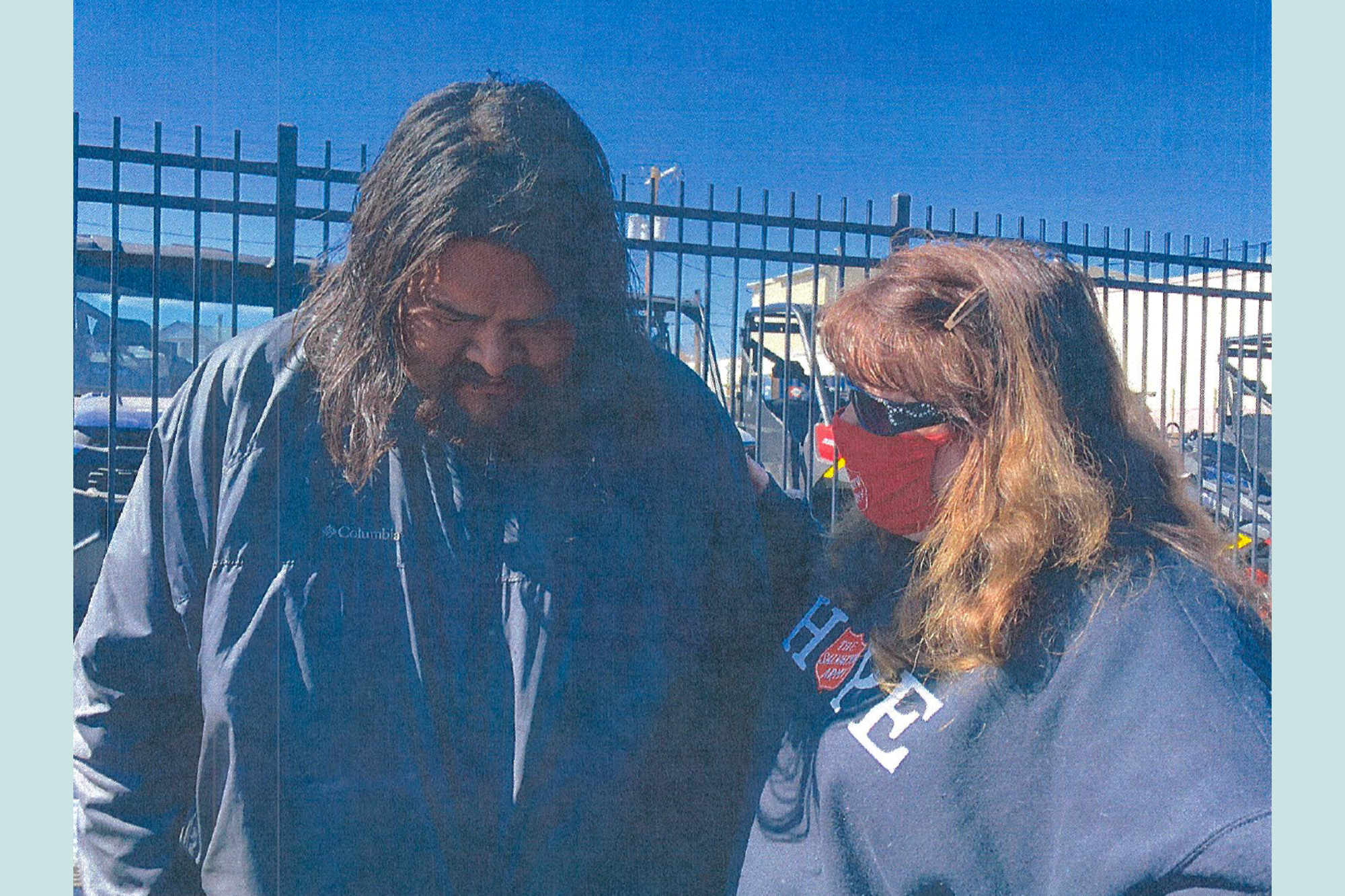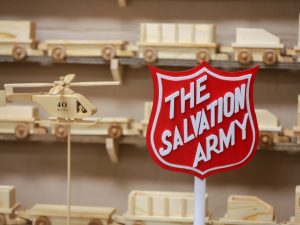Montana natives Tina and Tracey Morin have devoted their lives to providing assistance, care, and prayer to individuals seeking support at The Salvation Army Butte Service Extension Center.
Butte (Montana) Service Extension Center Coordinator Tina Morin and her twin sister Tracey Morin run the Service Center together. They identify the most urgent needs within the community and devise strategies to address them. Formerly attorneys, they sought a career change to expand their community service on a larger scale than before.
“We knew there was more for us to do,” said Tracey Morin. “We knew that God wanted us to help more. As attorneys, we can help 10 or 15 people a year. Here, Tina is helping hundreds a month, and that’s super fulfilling.”
The pair distinguishes between individuals who need immediate assistance with essentials such as food, shelter or transportation and those who require ongoing case management and sustained access to resources.
Butte, situated in rural Southwestern Montana, rests within the Silver Bow Creek Valley and is surrounded by the Highland and Pioneer Mountains. The mining industry in Butte took root in the 1860s and thrived through the 1880s. Drawn by the promise of jobs and financial prospects, many arrived with their families and needed charitable services.
According to Intermountain Divisional Commander Major Nesan Kistan, Butte was once a Salvation Army hub for those working in the mining industry.
“Butte, Montana, was a critical trading center when the mines in Butte were in full swing,” said Kistan. “The Salvation Army developed a presence there, and Butte became the site of our historic, original divisional headquarters.”
Although the need to support mine workers lessened, the Service Extension Center continues to provide needed social services in the remote region, positioned 68 miles away from Helena, the next nearest city.
“The Service Extension Center caters to at least four surrounding counties and seven towns,” said Tina Morin. “We’re also 20 minutes from the Montana State Prison and 100 yards from a Greyhound bus station.”
The duo has worked to pinpoint populations that lacked essential support and resources.
“Tina and Tracey represent the very ethos and DNA of The Salvation Army,” said Kistan. “I’ve seen them in action as they pray with people, and they minister to people. They’re not just giving food and assistance. They’re giving Christ to people that are most vulnerable.”
According to Kistan, the sisters make a deliberate effort to pray with anyone who walks through their doors, and very few decline the offer.
“I think it’s the compassion and dedication, but I think it’s even broader than that,” said Kistan. “I think there is a spiritual light that burns in the room and makes them incredible bosses.”
Tina Morin said that among the underserved populations they have identified, they are actively working on strategies to assist formerly incarcerated individuals, Native Americans, foster children and those without a home.
“Our task was to identify the needs that were sort of falling through the cracks in this community,” said Tina Morin. “The first thing we did was incorporate a homeless day center to create a centralized location where individuals can access resources and services.”
Additionally, the sisters strive to reduce distance-related obstacles and aid the community despite the challenges posed by their relative isolation from larger populations.
“We help people with transportation costs if they’re passing through and need tires, car repairs or fuel,” said Tina Morin.
However, thanks to the Service Center, populations that do require continued care are now receiving a level of service they hadn’t previously experienced.
The team identified a significant Native American population in need of counseling and therapy. As a result, two Native American therapists now visit the center to offer individual counseling services and group talking circles, which follow a Native American tradition of communication in which participants sit in a circle with the mindset that all members are equal and each belongs to the group.
According to Tracey Morin, talking circles are a way for participants to discuss shared experiences and connect with others.
“We’re able to provide safe spaces for everyone so that different populations are comfortable to come see us,” said Tracey Morin.
To meet the needs of foster children in the area, they assist with clothing, birthday parties and basketball camps.
According to Tina Morin, the Service Extension Center’s strong presence in the community has garnered recognition, leading to opportunities for collaborations and partnerships that can expand its reach.
Through a partnership with the Southwest Community Outreach Program, the Service Center assists clients exiting the prison system with obtaining ID and birth certificates—and connects them to the DMV.
Additionally, they collaborate closely with sober living facilities and housing programs across the state.
According to Tina Morin, Tracey Morin is the one who keeps her motivated and passionate about serving the public, even in the face of obstacles.
“Her love and her ability to see people as God sees them is just phenomenal,” she said. “She sees without distinction, without discrimination, but with love and acceptance.”
The sisters’ commitment to each other has aided in fostering a community of inclusivity and compassion, echoing the mission of The Salvation Army to serve in Jesus’ name without discrimination.
Looking ahead, the team plans to continue to be responsive to the evolving dynamics of the community.
“The success of the Service Extension Center in Butte stems from the community’s long-standing presence and vigilant care for one another,” said Tina Morin.
Do Good:
- See how The Salvation Army fights homelessness.
- How do we treat everyone with love and kindness, as if they were our neighbor? Get the Do Good Family Roadmap and take a 4-week journey for families in how to be a good neighbor. Follow the guide to see what the Bible says about the art of neighboring and take tangible steps together on your printable roadmap to be a caring, helpful, welcoming and supportive neighbor right where you are.












